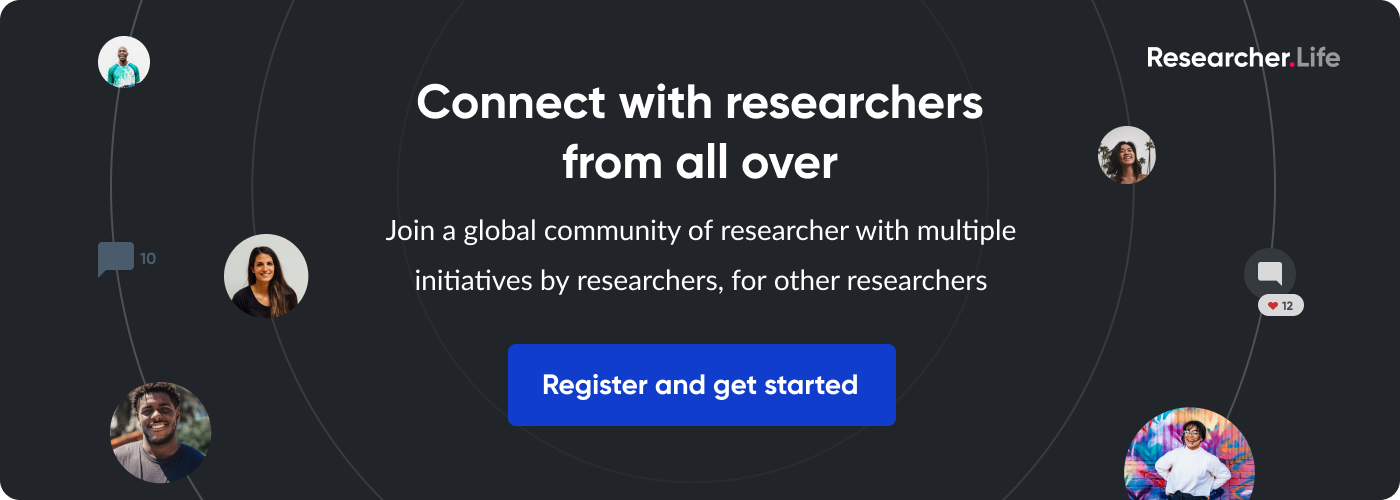Promoting your article in the social media age
Improving research visibility and networking skills
Academia is a highly competitive arena and researchers who want to boost their career prospects have to actively promote their research and be connected with fellow researchers. The articles in this series provide guidance to researchers in making themselves and their research more discoverable and visible. They include tips on what researchers should do before and after the publication of their article, how they should promote their research on social media, network in conferences, and more.

[This post was created for the Wolters-Kluwer author newsletter Author Resource Review and has been reproduced with permission.
This post is authored by Julie Rempfer, an Associate Publisher at Wolters Kluwer. She serves as a Publisher of a collection of Nursing and Health Care Management journals and is an enthusiastic social media user and strategist. You can find her on Twitter at julierempfer@twitter.com.]
There is immense competition for an article to be recognized in this social age. In 2014 there were over 34,000 scholarly peer-reviewed journals worldwide, publishing about 2.5 million articles each year.1 In addition, countless news articles, e-newsletters, blog posts, and multimedia content (such as videos and podcasts) make information overload even more challenging for individual articles to be recognized. It is not humanly possible to read everything available, and as an author, it’s becoming more and more important for you to help your publisher promote your work to your peers. One of the easiest and most effective ways to do this is through social media, and this article will outline some tips to get you started and see how self-promotion can pay off.
Planning for self-promotion
Before you start a self-promotion plan for one of your published articles, you need to determine who your audience is and what social platforms you should use to get their attention. Are you working with a peer on Facebook or is your article something of interest to family and friends? Are your colleagues and professional contacts only on LinkedIn or Twitter? Are you attending a conference with dedicated social media hangouts or networking opportunities? Are there other social media platforms worth investigating in your personal or professional life (Instagram, Snapchat, Pinterest, Reddit, GooglePlus, etc.)? By asking yourself ‘Who’ and ‘Where’, you may discover that you don’t need to promote your article on every single social media outlet. A focused, prepared plan is more attainable and more likely to be successful.
Once you know where to promote your article, the next step is to think about and craft your message. As the author, you know your work better than anyone else and can speak to what is new, different, or exciting about it and why reading your article is worth someone’s time. It also will give you a chance to show your expertise and how much time and energy went into the article, the project, the research study, etc. A great example could be something along the lines of, “My article on XYZ, published in Journal XYZ, discusses a breakthrough in something amazing. Peers, please read and let’s discuss implementation.” You should also think about different messages for different audiences. For instance, your family and friends may be more responsive to a simpler message, such as, “This is what I’ve been doing for the past 6 months”—with a link to your published work on the journal website.
Hashtags
Tweets with hashtags get two times more engagement than tweets without.2 By using hashtags (#) in your social media post, you can direct your post to those in your specialty who are actively seeking information on the topic at hand. You can search for #Zika on Facebook or Twitter and see only those posts or tweets with the “Zika” hashtag, and these hashtag search results are often sorted by the most recently added post, which is helpful for the most recent news. Most conferences have a dedicated hashtag and should be considered a strategic way to connect with and to promote your article to your peers. For example, the Healthcare Information and Management Systems Society (HIMSS) witnessed over 37,000 posts with the hashtag #HIMSS15 in just the first two days of their 2015 annual conference.3 People are still communicating with posts containing hashtag #HIMSS16 ten months after the 2016 conference ended and active posts and conversations with hashtag #HIMSS2017 started during the summer of 2016. HIMSS 2017 will be held in February 2017. Simply adding a related hashtag to your social media post will place the post in similar kinds of discussions and grow the discoverability of your work.
Tip: Not sure where to start? Check out www.Symplur.com/healthcare-hashtags for an up-to-date list of the most popular hashtags and topics that people are talking about right now in healthcare, including conferences, medical conditions, and diseases. You can use as many hashtags as you’d like in your post to have your tweet appear in multiple social media searches or conversations, but it’s best practice to keep it to less than two hashtags per post.2
Mentions
Taking it one step further, using hashtags is an effective and easy way to discover and interact with top industry contributors with whom you may want to follow and retweet some of their future posts. You can also mention people directly in your posts, perhaps a peer or new connection, by using the “@” symbol. This can be a simple hello, such as “@TopDoctor Nice to meet you at #ConferenceXYZ. Or, you can show collaboration with another peer or with the journal where your article was published, such as, “Excited to present on #Topic at #Conference2016 with @TopDoc. Read my paper in @JournalAccount http://bit.ly/shortenedlink. Your publisher may approve making the article free online for a limited time, such as during a conference when you would be presenting. If this is something you feel would be beneficial, discuss with your publisher in advance of the conference.
Tip: You can create shortened redirect links for free through www.bitly.com that will drive traffic to your article on the journal website, save you characters on Twitter, and provide analytics, such as how many people clicked on your link. There are many similar services out there, but for those getting started, we recommend bitly.com for its simple usage.
It’s also a good idea to set up redirect links and draft your posts in advance, either through an old-fashioned notepad with paper and pen, through e-mail, in a Word document or a notes app, or in drafts on Twitter or Facebook. This will allow you to copy and paste (or just hit publish) when you’re on the go and help your post get maximum attention while the conversation iron is hot!
Measuring self-promotion efforts via Altmetrics
Altmetrics are a new way to track the attention and conversations around individual articles in real time from a variety of sources other than citations, including social media, blogs, news outlets, and more. Unlike the Impact Factor, which measures citations of a journal as a whole over the course of the previous two years, Altmetrics measure each article and updates the information in real-time for anyone to see. An important distinction is that Altmetrics measure Attention – whether good, bad, or simply ridiculous. Some of the highest Altmetric attention scores, derived by the number and sources of attention, belong to fictitious or more general interest articles that appeal to the public. Therefore, a high score isn’t always a true indicator that your article has made a significant impact on the science or in your area of study. You can learn more about Altmetrics and the latest developments on their website: www.WhatAreAltmetrics.com.
Beginning in 2016, Wolters Kluwer added the Altmetrics badges on all of their journal websites and articles. This widget can be found on the right-hand column of any individual article on a Wolters Kluwer journal website (if you do not see this widget or the altmetric “donut” on your mobile device, change to desktop view). This Altmetric widget will show the numbers of tweets, Facebook posts, blog pickups, news pickups, and whatever other sources have mentioned your article, including your own social media pushes as an author and those from the journal and/or publisher. Clicking “See More Details” within the widget will show the exact tweets, blogs, news articles and other mentions that corresponded to the score, the reach of these mentions geographically, and an easy way to respond to each and continue the conversation around your article and your work.
Since Altmetrics were introduced, , Wolters Kluwer has seen a direct correlation between the attention scores and the self-promotion activities of authors via social media, blogs, and other sources such as press releases. Should your institution want to do a press release around your article, contact your publisher for our newly released Institution Press Release guidelines. Adhering to these guidelines will properly alert the publisher’s social media managers and PR team to your institution’s press release and help maximize the attention to the article and your institution.
To see Altmetrics in action, take a look at a recent article published in Journal of Developmental & Behavioral Pediatrics, “Same-Sex and Different-Sex Parent Households and Child Health Outcomes: Findings from the National Survey of Children's Health.” By clicking the “See More Details” widget, you can see the actual mentions from a variety of sources, including the society, the authors and their institution, conversations happening on social media, and links to the news articles. This is a superb example of an impactful study and the positive attention it is receiving from around the globe.
In closing, there is so much more that can be done on social media and there are so many social platforms not mentioned here. Check out other social media platforms and explore additional ways to promote your article online.
Comments
You're looking to give wings to your academic career and publication journey. We like that!
Why don't we give you complete access! Create a free account and get unlimited access to all resources & a vibrant researcher community.

Subscribe to Career Growth


















